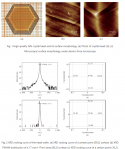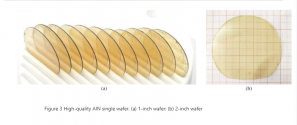8-inch should make this one of the largest production facilities for MEMS in the world I think. Those fabs typically use older tools and processes. MEMS are useful for making things like accelerometers and gyroscopes used in smartphones for example. These are usually fairly small in die area anyway.
With regards to SMEE, I think other than the commercial lithography machines they sell for packaging, the front-end lithography machines they developed are basically targeted at meeting the needs of Project 02 and the government's requirements. These machines are likely used to make military chips and other chips for the government in facilities we do not even know about. Given that the military requires mostly older chips with limited production runs, the capacity of the tools is sufficient. But there definitively needs to be a focus on making machines competitive for sale to commercial sites. The government needs to fund this effort, and I think SMEE needs to be radically expanded in size, it needs multiple teams working on multiple projects to plug all the gaps. There should be replacements for all lithography machines.
The other tool vendors need to do their own production and replace all imports of components they have as much as possible. And the whole tools industry will likely need to consolidate into just a couple major players. There are just too many companies and there is a lack of integrated tool chain. China needs to have like two companies similar to TEL. And there definitively is a need for another lithography company, even if it working on marginal developments like e-beam lithography or something like it.
I think the most likely way to do this would be to aggregate most of the other tools vendors into two large companies which would be centered around AMEC and Naura. Those would be beefed up to compete with TEL and Applied Materials. Lithography would remain separate.
With regards to SMEE, I think other than the commercial lithography machines they sell for packaging, the front-end lithography machines they developed are basically targeted at meeting the needs of Project 02 and the government's requirements. These machines are likely used to make military chips and other chips for the government in facilities we do not even know about. Given that the military requires mostly older chips with limited production runs, the capacity of the tools is sufficient. But there definitively needs to be a focus on making machines competitive for sale to commercial sites. The government needs to fund this effort, and I think SMEE needs to be radically expanded in size, it needs multiple teams working on multiple projects to plug all the gaps. There should be replacements for all lithography machines.
The other tool vendors need to do their own production and replace all imports of components they have as much as possible. And the whole tools industry will likely need to consolidate into just a couple major players. There are just too many companies and there is a lack of integrated tool chain. China needs to have like two companies similar to TEL. And there definitively is a need for another lithography company, even if it working on marginal developments like e-beam lithography or something like it.
I think the most likely way to do this would be to aggregate most of the other tools vendors into two large companies which would be centered around AMEC and Naura. Those would be beefed up to compete with TEL and Applied Materials. Lithography would remain separate.
Last edited:



